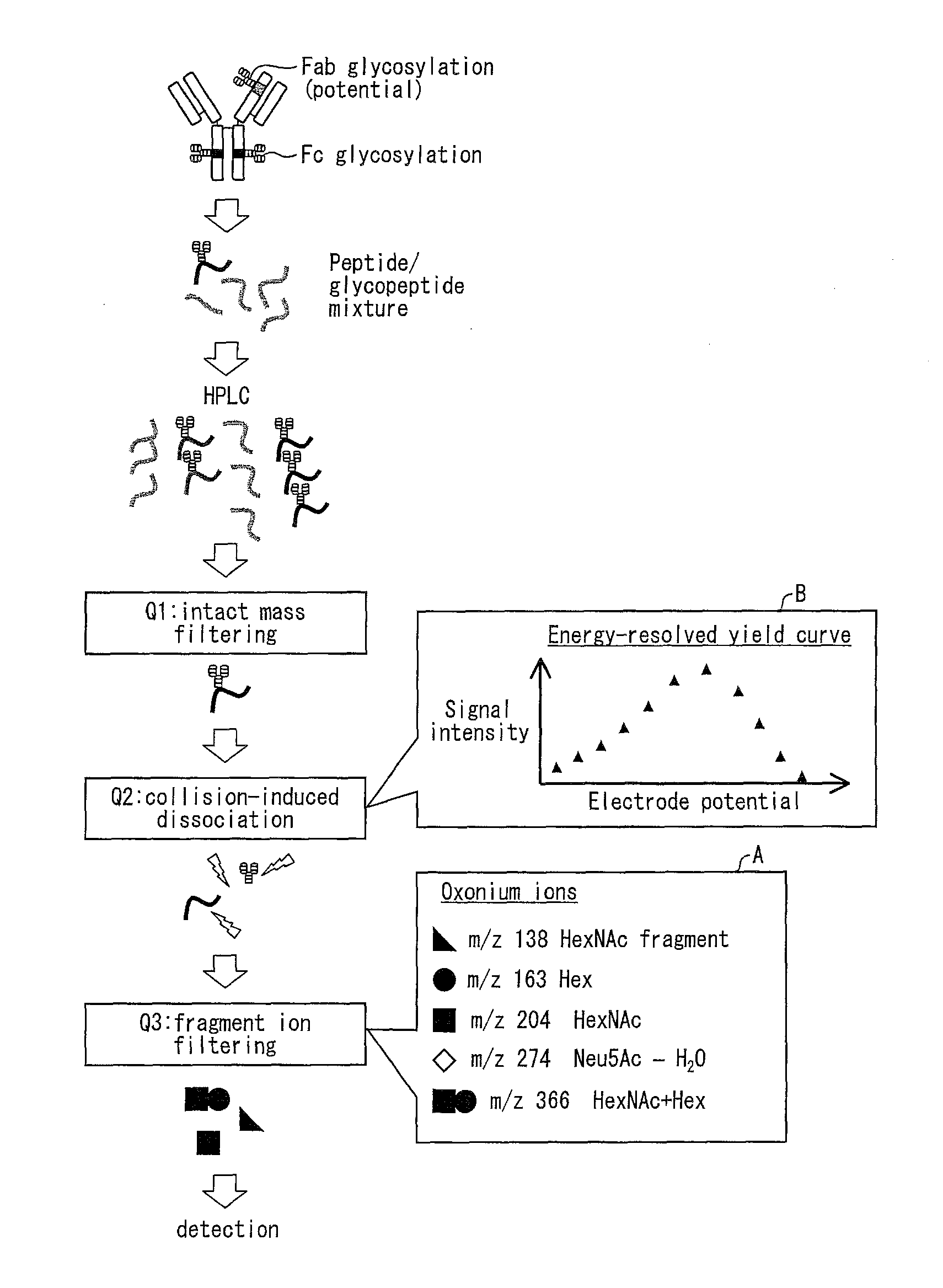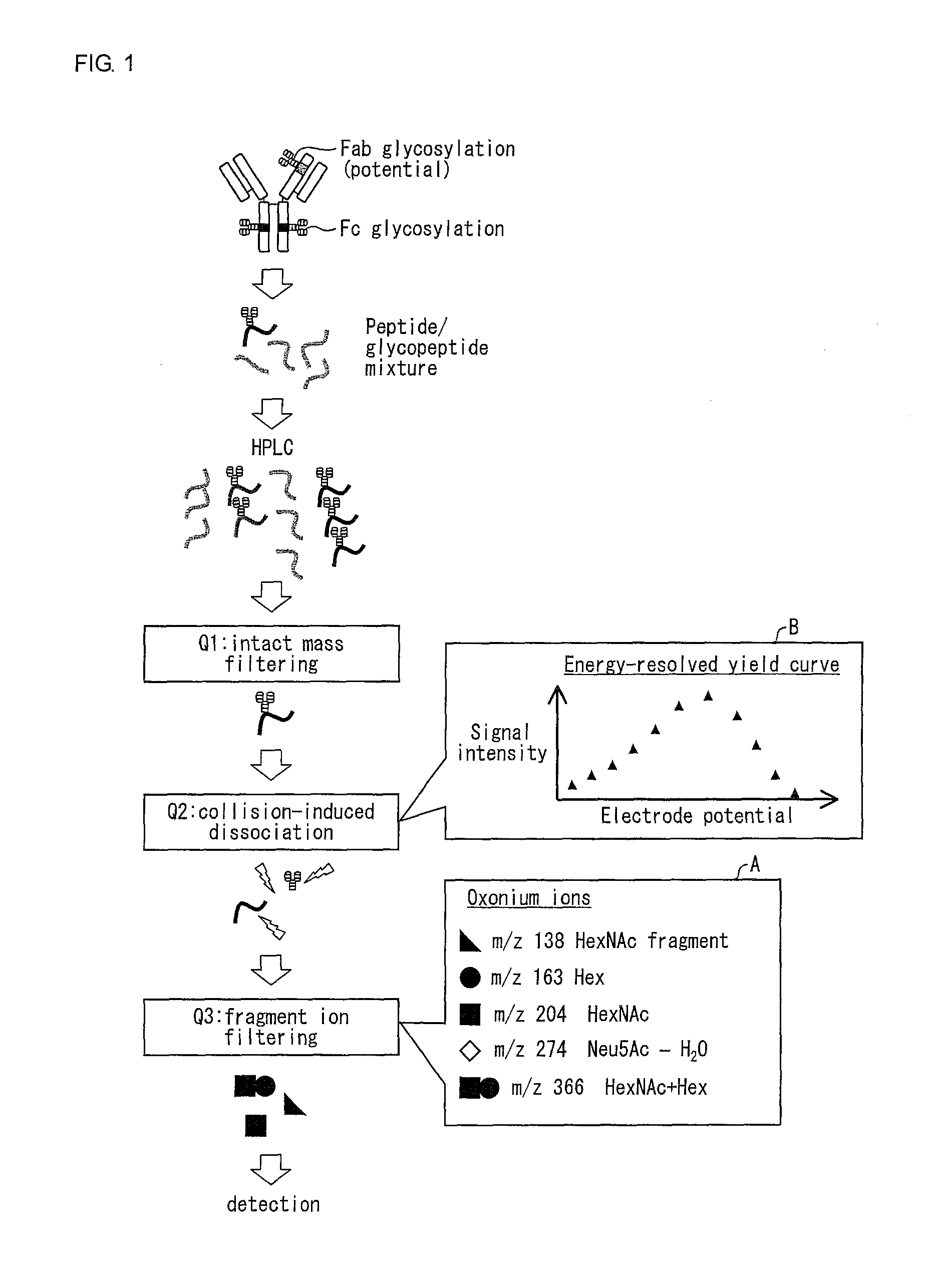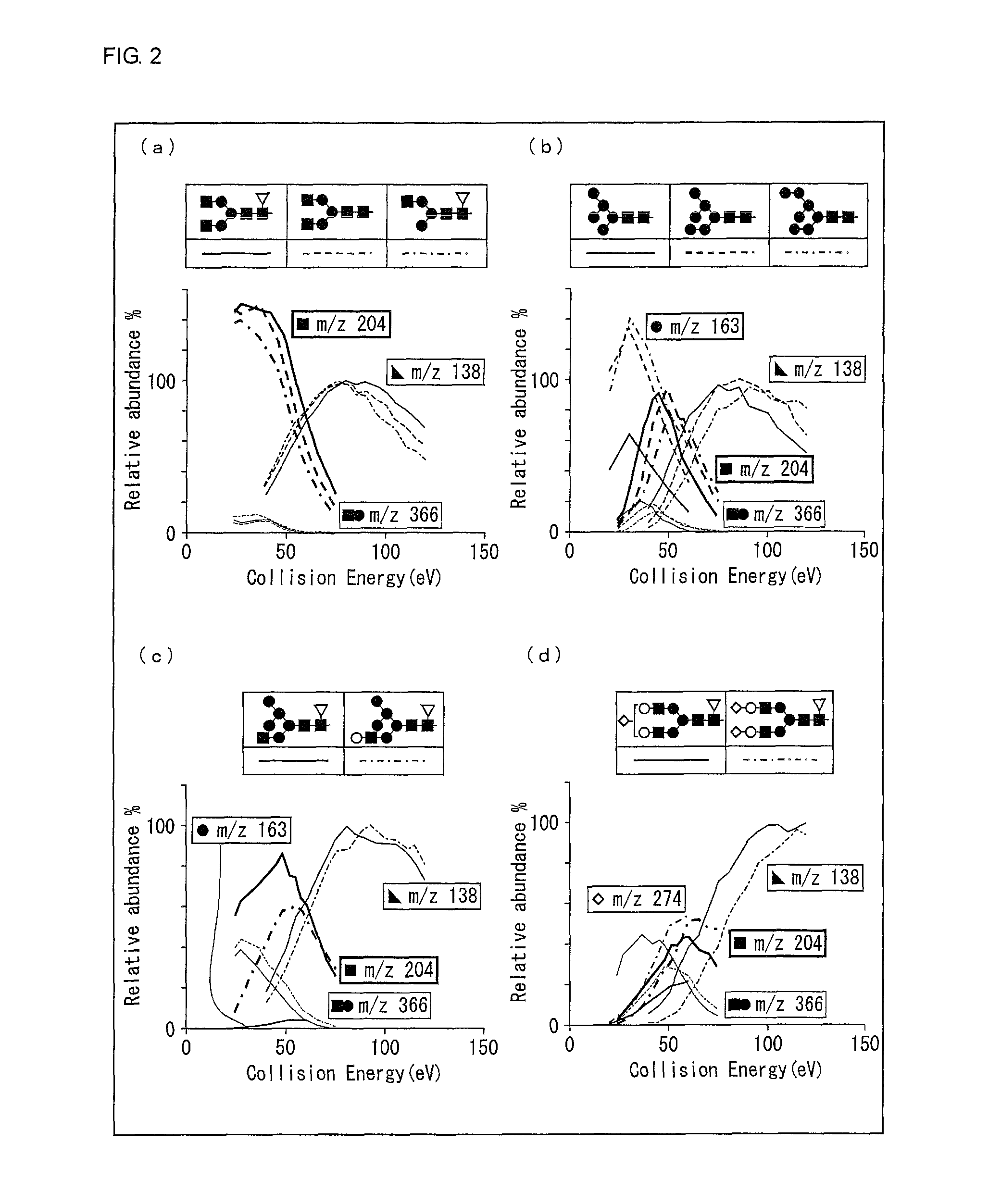Method for analyzing glycan structure
- Summary
- Abstract
- Description
- Claims
- Application Information
AI Technical Summary
Benefits of technology
Problems solved by technology
Method used
Image
Examples
example 1
Identification of Glycan Structure with Use of Energy-Resolved Oxonium Ion Profile
[0088]FIG. 1 shows a scheme by which an energy-resolved yield curve of oxonium ions is acquired by using a triple quadrupole mass spectrometer. The following overviews this scheme. First, a glycoprotein test material (immunoglobulin in FIG. 1) is digested by trypsin into a peptide / glycopeptide mixture. The mixture thus obtained is fractionated by HPLC, and is then subjected to mass spectrometry using a triple quadrupole mass spectrometer. In the triple quadrupole mass spectrometer, a first quadrupole (Q1) isolates glycopeptide ions with unique mass (filtering), which are subsequently guided into a second quadrupole (Q2) where they undergo CID. The kinetic energy of precursor ions, which governs energy and rate of the CID in Q2, can be controlled by changing an electrode potential (corresponding to CID energy) of ion entry into Q2. A third quadrupole (Q3) filters product ions to selectively detect oligo...
example 2
Prediction Using Linear Regression Analysis
[0099]In Example 2, model data was obtained by subjecting test materials whose glycan structures are known to similar measurement and data processing to those in Example 1 and then linear regression analysis using this model data was carried out.
[0100]First, two types of glycopeptides having the glycan structures shown in (a) and (b) of FIG. 11, respectively, were prepared, and measured values of respective types of product ions at each value of CID energy were obtained. These glycopeptides are identical in mass but are different from each other in structure. For convenience, the glycan structure shown in (a) of FIG. 11 was set to 0 and the glycan structure shown in (b) of FIG. 11 was set to 1. These values 0 and 1 were used as an objective variable Y for specifying a type of a glycan structure. Note that the same explanation as that for the schematic glycan structures shown in FIG. 2 can be applied to the schematic glycan structures shown ...
example 3
High-Sensitivity Quantification of Glycopeptides
[0105]An observation of various energy-resolved oxonium ion profiles revealed that energy-resolved yield curve shapes of the oxonium ion of m / z=138 were similar among tested glycan structures. To clarify this, the following test was conducted.
[0106](Materials)
[0107]As human immunoglobulin (IgG) test materials, Cetuximab was purchased Merck Serono (Tokyo, Japan) and Trastuzumab was purchased from Chugai Seiyaku (Osaka, Japan). These test materials were digested by trypsin. As a result, standard materials containing a large variety of glycopeptides were obtained. Specifically, 80 μg of each of these test materials was dissolved in 33 μL of 8 M urea solution. To the solution thus obtained, 1.7 μL of a dithiothreitol-triethylammonium bicarbonate solution (100 mM dithiothreitol, 1 M triethylammonium bicarbonate) was added. The mixture was reduced at 55° C. for 30 minutes. Next, after addition of 3.5 μL of 0.5M iodoacetate, the mixture was a...
PUM
 Login to View More
Login to View More Abstract
Description
Claims
Application Information
 Login to View More
Login to View More - R&D
- Intellectual Property
- Life Sciences
- Materials
- Tech Scout
- Unparalleled Data Quality
- Higher Quality Content
- 60% Fewer Hallucinations
Browse by: Latest US Patents, China's latest patents, Technical Efficacy Thesaurus, Application Domain, Technology Topic, Popular Technical Reports.
© 2025 PatSnap. All rights reserved.Legal|Privacy policy|Modern Slavery Act Transparency Statement|Sitemap|About US| Contact US: help@patsnap.com



